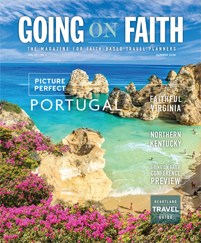Though it currently has a population of just over 500,000 compared to Montreal’s more than 1.6 million, Quebec City is the capital of the region of Quebec thanks to its long history as the capital of New France. The city of Quebec officially dates back to 1608, when it was founded by Samuel de Champlain, but the site was first settled in 1535, more than 50 years before the establishment of “The Lost Colony” at Roanoke.
“You need to do a city tour to understand the city’s history, not only related to the Roman Catholic religion, which played a very important role in the development of Quebec City, as Augustine nuns opened our first hospital, but also the military history,” said Nancy Dacres, account executive for Quebec City Tourism. “A new hop-on/hop-off bus service has recently started, and in the summer, it’s double-decker.”
This year, groups have two special new opportunities to experience Quebec City’s religious history. The original Augustine monastery and hospital, which dates back to 1639, reopened in August as a 65-room hotel and holistic health center named Le Monastère des Augustines. Nearby, the more than 350-year-old Basilica of Notre-Dame de Québec will open its Holy Doors — decorative doors in the church periodically opened as a symbolic act of celebration — December 12 through November 20, 2016, in line with Pope Francis’ declaration of 2016 as a jubilee year. The basilica’s Holy Doors are the only ones outside Europe and one of only seven sets in the world.
One of the highlights of a group visit to Quebec City, according to Dacres, is simply allowing time to take in life in Old Quebec, which is listed on UNESCO’s World Heritage List. “In the summer months, with the outdoor cafes, you can take in not only the history and the beauty of the city, but also the laid-back attitude of the outdoor cafes,” she said. “It’s a lovely quality of life here, and we enjoy life as much in the winter as in the summer.”
Montmorency Falls at the Parc de la Chute-Montmorency
Just a 10-minute drive north of the city along the shores of the St. Lawrence River is Montmorency Falls, which is nearly 100 feet taller than Niagara Falls. Active groups can step up their visit to the park by arriving by bike along the Corridor du Littoral from the city center, by zip lining 984 feet across the face of the falls in summer or by ice climbing the frozen rock faces adjacent to the falls in the winter.
In winter, groups can catch the “sugar loaf” phenomenon, a cone of ice that forms at the base of the falls from its splashes. A year-round cable car that can accommodate 40 people at a time links the bottom of the falls at the St. Lawrence River with the upper falls vantage point.









